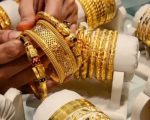ISLAMABAD (Online) – Although sleepwalkers have an increased risk for headaches and migraines when awake, while sleepwalking, they are unlikely to feel pain even after suffering an injury.
The researchers said that Sleepwalkers reported headaches four times more frequently than non-sleepwalkers, and migraines 10 times more often, as well as higher levels of chronic pain, daytime sleepiness, and depressive and insomnia symptoms. After adjustments, however, sleepwalking was associated with increased risk for headache and migraine only.
But most surprising was the assessment of pain perception during injuries sustained while asleep.
Of the sleepwalkers, 47 reported having experienced at least one injurious sleepwalking episode. Only 10 reported waking immediately due to pain; the other 37 perceived no pain during the episode but felt pain later in the night or in the morning.
One patient sustained severe fractures after jumping out of a third-floor window while sleepwalking but did not feel the pain until after waking up later in the night.
Another broke his leg during a sleepwalking episode in which he climbed onto the roof of his house and fell down, but he did not wake up until morning.
Dr Lopez said that “Our most surprising result was the lack of pain perception during the sleepwalking episodes. We report here, for the first time, an analgesia phenomenon associated with sleepwalking.”
He adds that, while the relationship between sleep and pain remains unclear, the results may help to understand why sleepwalking happens.
Regarding what causes sleepwalking, he says that many patients report “some disturbance that compels movement.” Howell suggests that sleepwalking could be related to motor restlessness, like restless leg syndrome.
Limitations of the study include the fact that sleepwalking episodes are generally associated with lack of conscious awareness and memory of the event; the absence of perceived pain during parasomnia episodes could be due to a recall bias.















